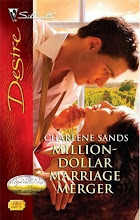It's late in the day, but I thought I'd post a quick thought. I've been working on my historical story Shanghaied Groom and I must admit that after writing a few contemporaries and having two more ideas floating around in my head, I'm finding it difficult to get "into" this story. It's a great story, don't get me wrong, but I've been away from it now almost a year. And so, I remembered something "classic" that Susan Elizabeth Phillips taught me in one of her workshops. You can't work with a blank sheet of paper. Put something down, even if it's garbage and fix it later.
I'm not good with garbage. I tend to throw my garbage out every day. I like clean trash, so this is really hard for me. Yet, I'm doing it. I'm writing and you know, it's working! Putting something down has helped me formulate my ideas and the story is now flowing much better. I'm committed to writing five to ten pages a day, so I can't afford to go "blank."
Another thing I thought to do, was to go back and study some of my research books. I have these great easy reads, that look a lot like coloring books, but they are filled with valuable information. I sticky-note a page when there's an idea I think might work, and then sure enough, I'm able to go back and use it.
I still have nearly 300 pages to write, so I know I'll use these techniques again. Anybody else out there have clues and hints as to how to KEEP GOING when your mind goes blank?
Subscribe to:
Post Comments (Atom)



























1 comment:
I have something that works for me. I'm not a plotter, or a planner, though of course I write a synopsis to sell the book. So I often don't know exactly where the story's going until the characters tell me. When I start a book, I make a list of 25 THINGS THAT COULD HAPPEN. I number a page (actually I've made myself a Word template) and sit down and don't stop until every number has an idea behind it--no matter how outrageous. There's something about knowing you have all those lines to fill and not being able to stop until you're done that frees up your creativity.
This can always be done in the middle of the book, too. Whenever I use this exercise in a workshop, the writers always get ideas to use in their stories. It's amazing.
So anyway, if I get stuck -- or feel unenthused -- I go to this list and find something to use. Tweak it. Twist it. But don't rule it out.
I find your idea works for me, though. If I sit in my chair, open the file, and place my fingers on the keyboard, words come out.
Post a Comment